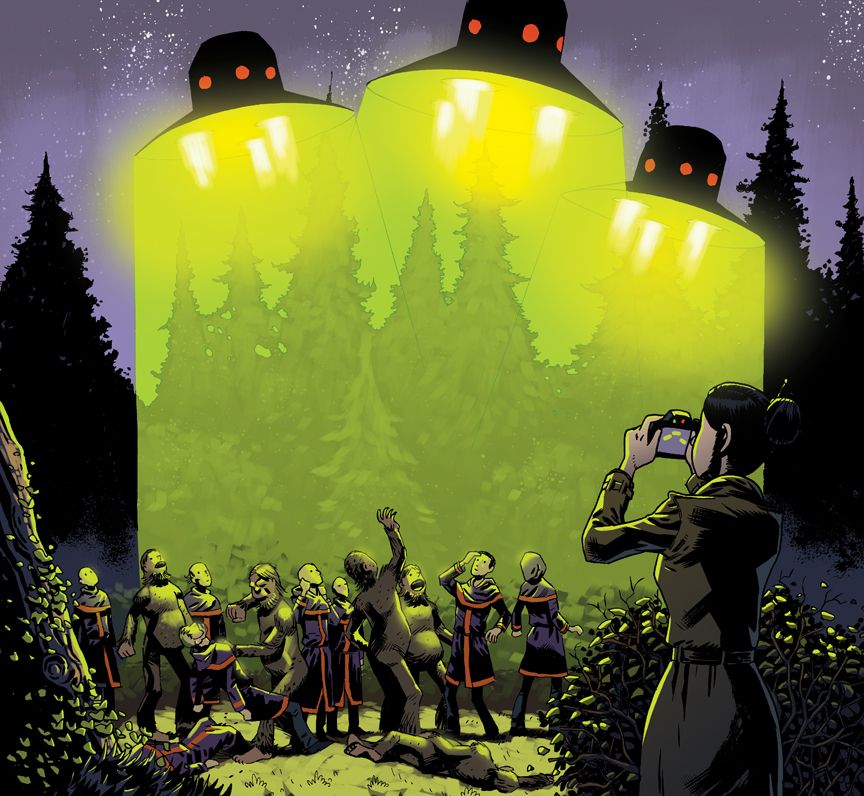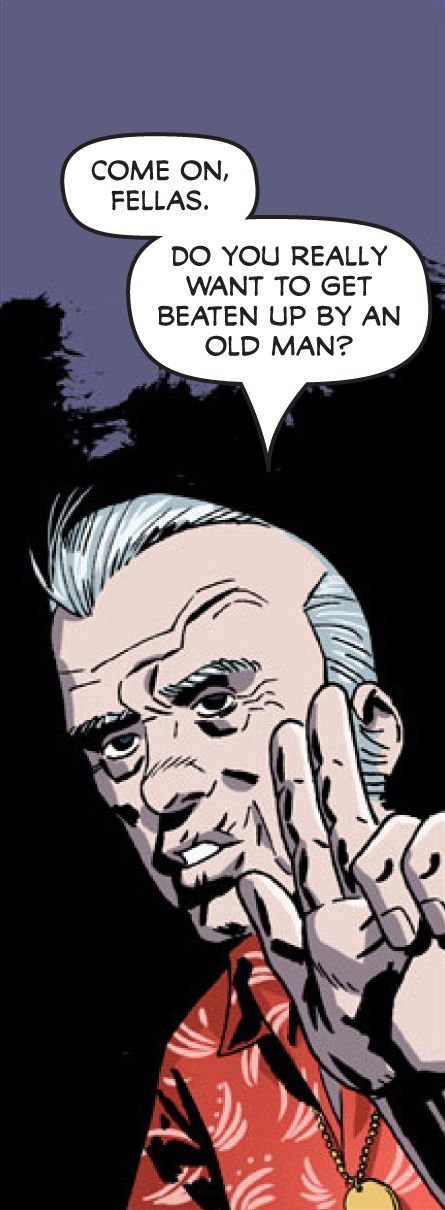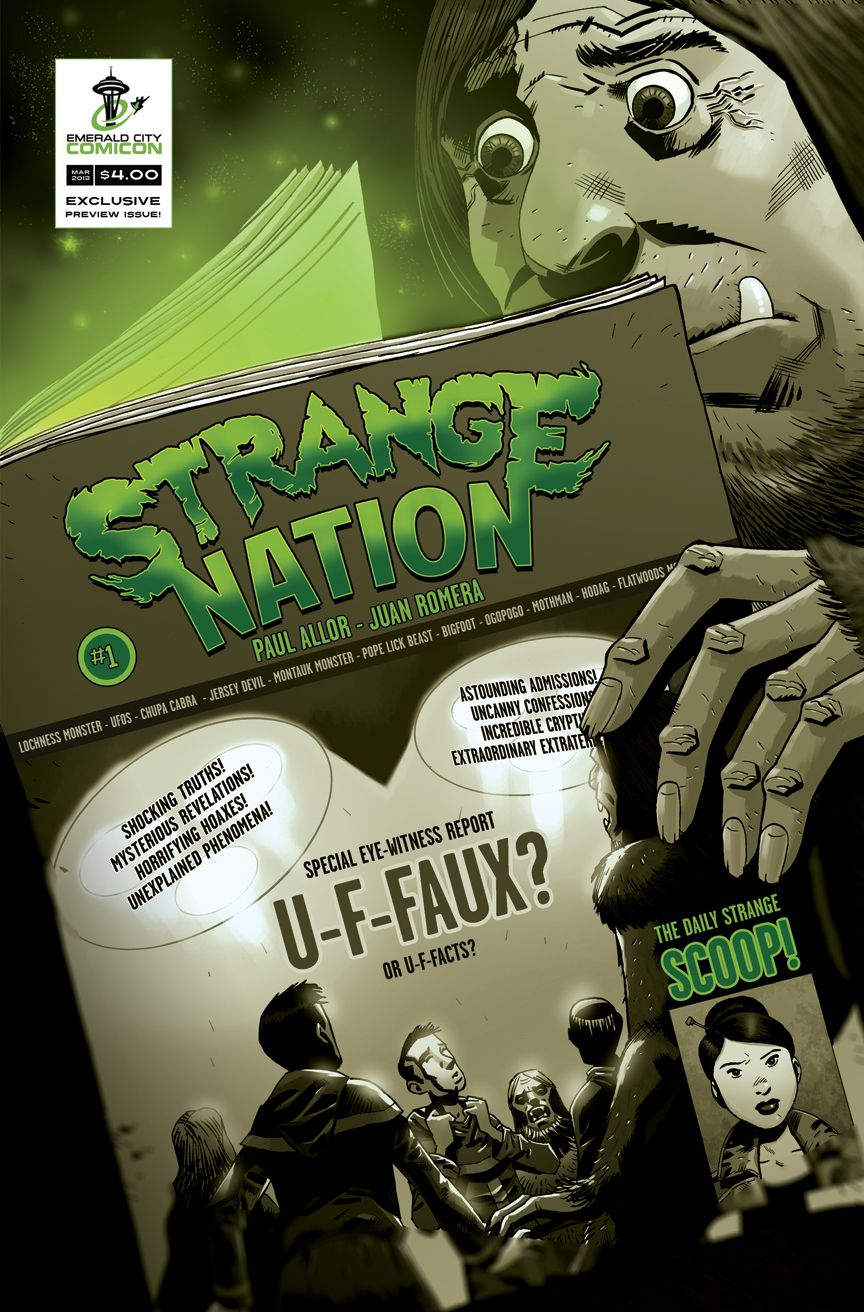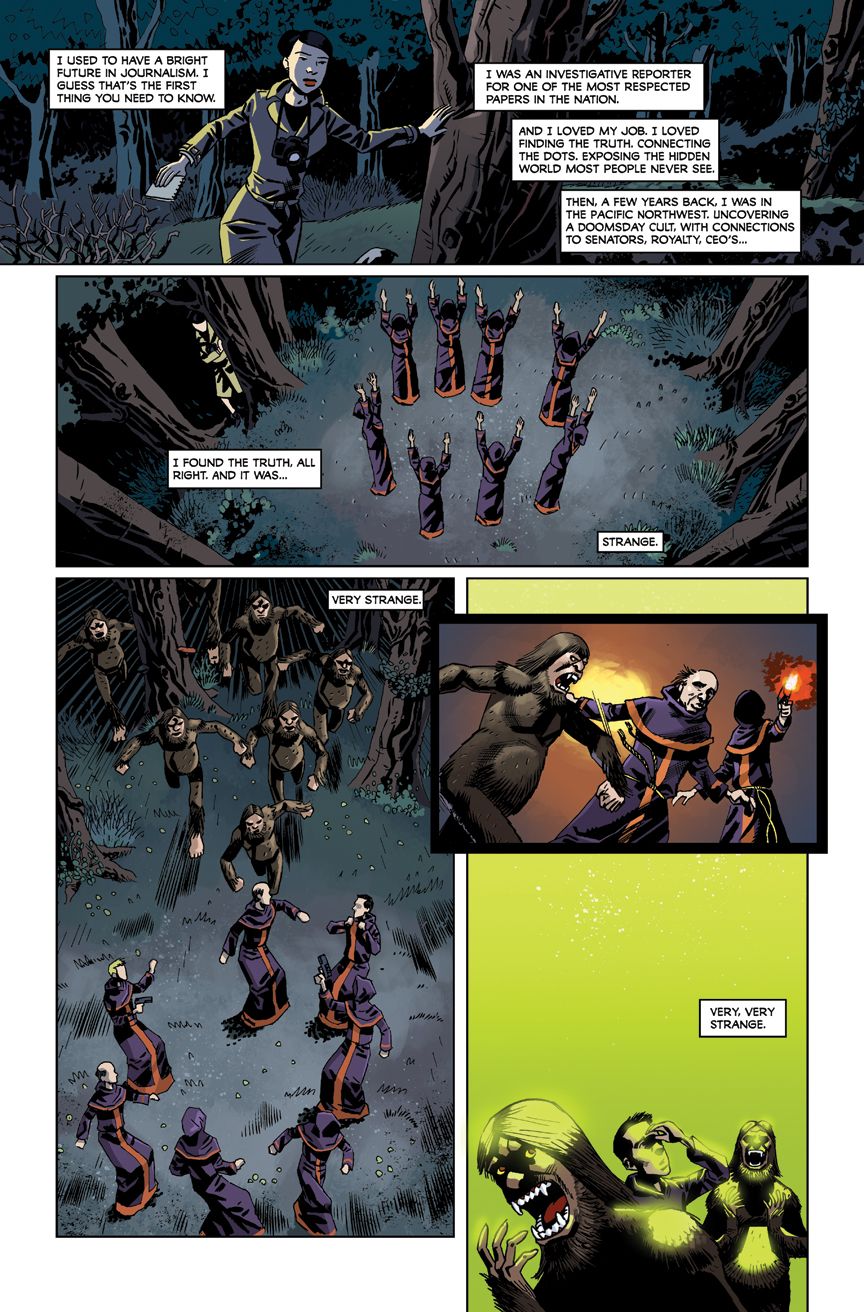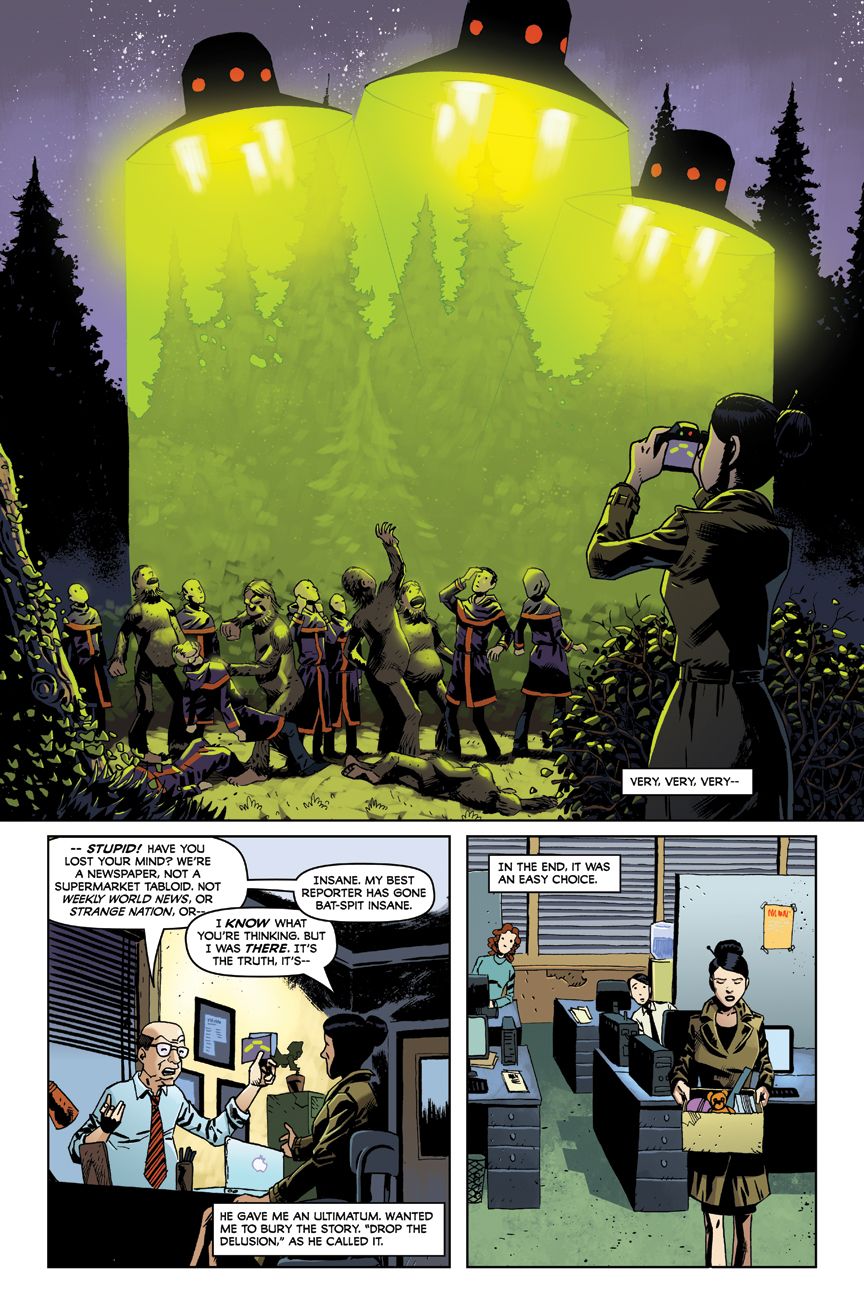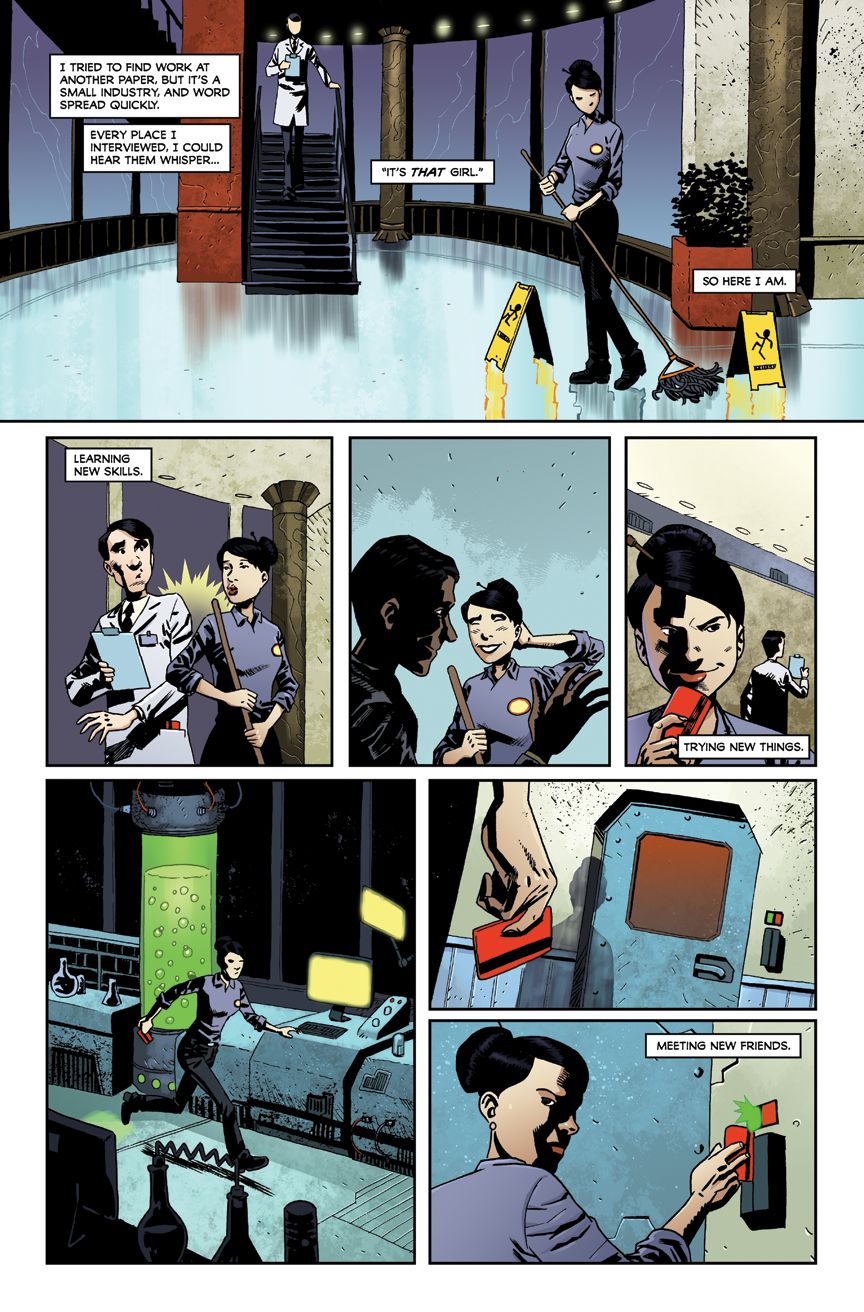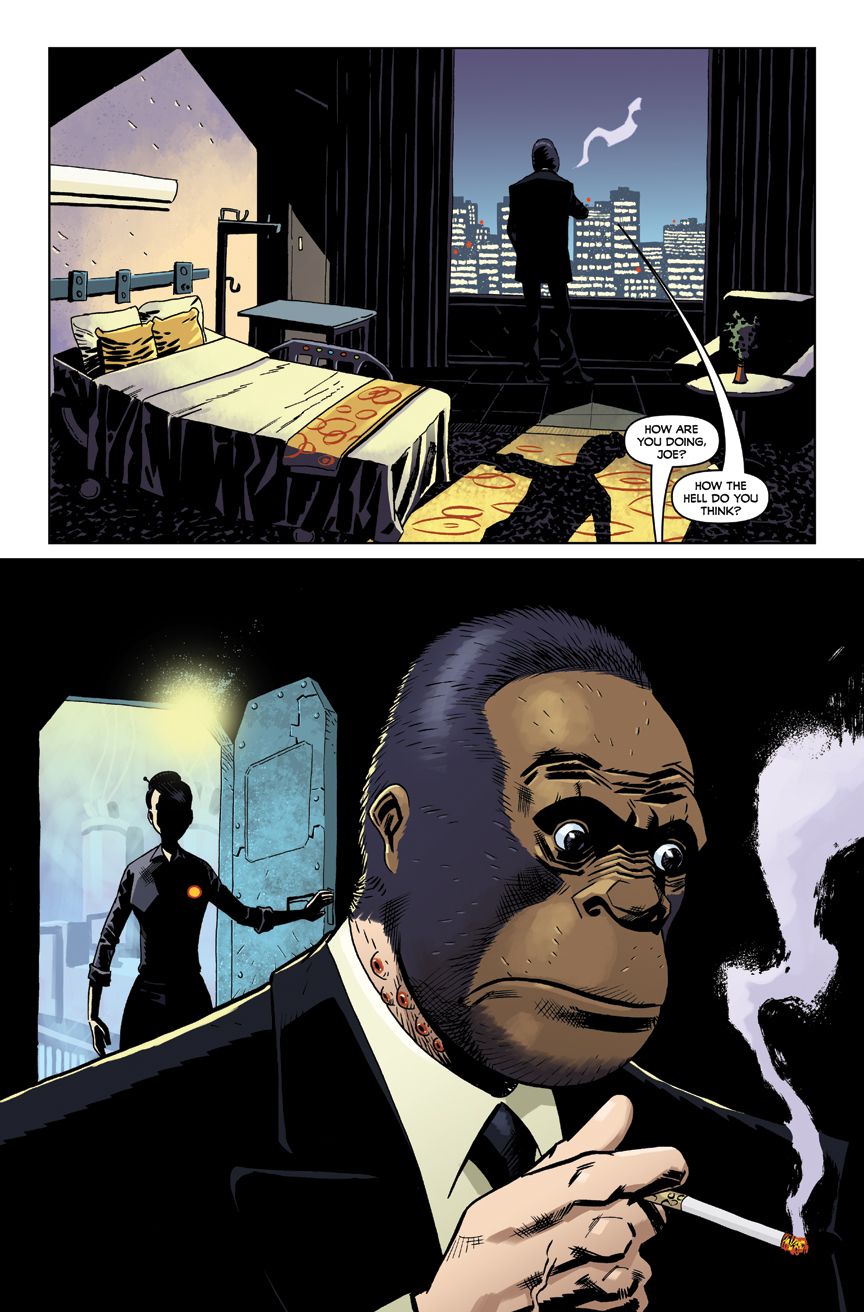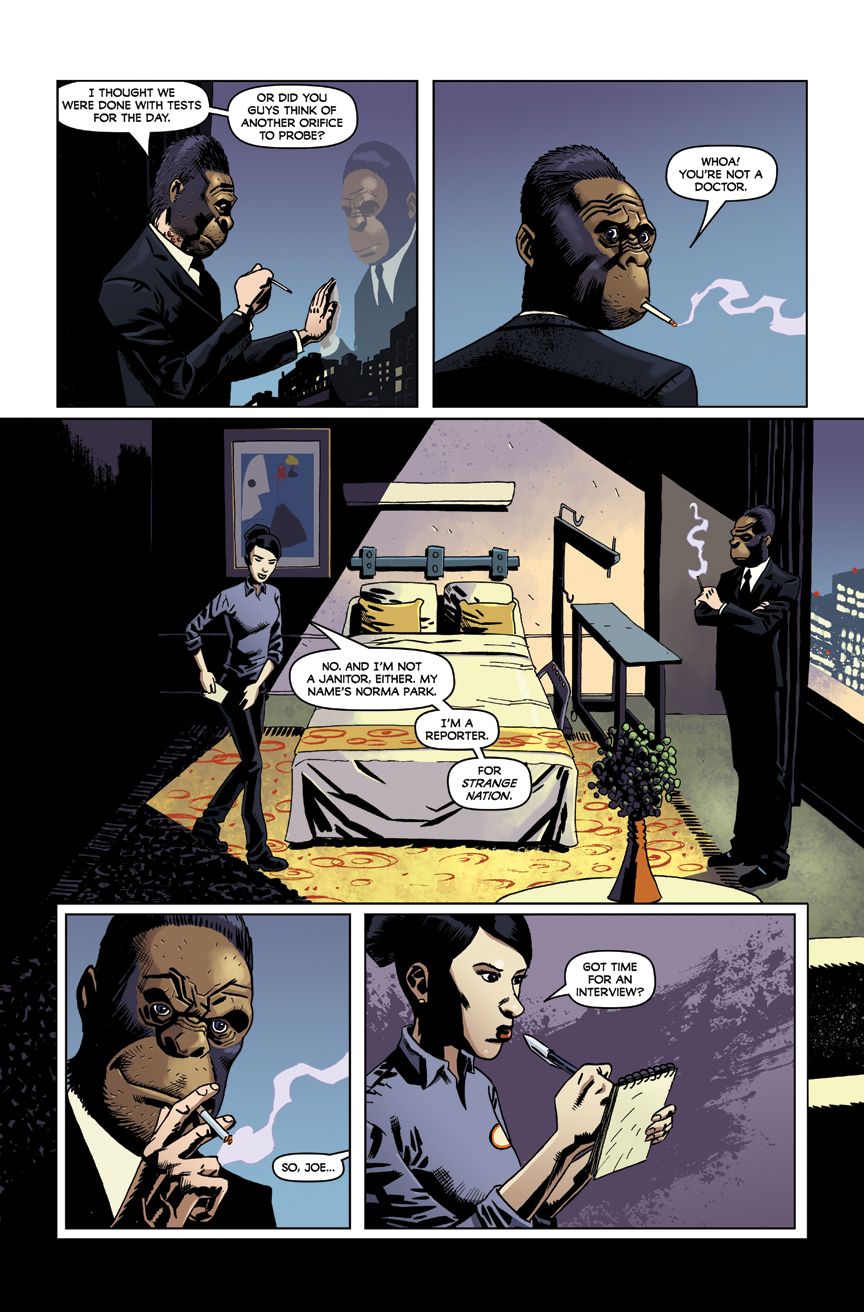Coming up this weekend at Emerald City Comicon, writer Paul Allor (Table G-01) will have advance copies of the first issue of Strange Nation, his new Action Lab Comics miniseries with artist Juan Romera. The book's premise is straightforward: Norma Park is a journalist who finds herself out of work after claiming to uncover a story involving Sasquatch, aliens and mad scientists. Her insistence at delving deeper into this story is when the real fun begins. In addition to offering an advance copy of the first issue this weekend, Allor will also make it available for Fabletown and Beyond (March 22-24, 2013, in Rochester, Minnesota). The full miniseries will hit stands in late 2013 in comic stores and through digital distribution outlets. In anticipation of ECCC, Allor joined me for a brief interview, and provided ROBOT 6 with a five-page previews.
Tim O'Shea: How long has Strange Nation been in development, and what prompted you to tap Juan Romera as the artist?
Paul Allor: I probably started working on the pitch for Strange Nation a little more than a year ago. Juan was the first person I had in mind for the art, having worked with him previously on “Reach the Sun.” one of the stories in my Clockwork comics anthology (which Robot 6 interviewed Allor about in 2011). Juan is awesome at both the wacky, out-there aspects of the book, and also at nailing the small emotional moments. I thought this book would be a great place to showcase both sides of that.
You have self-published some of your past work, but this time you teamed with Action Lab Comics to publish the four-issue miniseries. What motivated you to go that route, and was it your idea or Action Lab's to offer advance copies of Issue 1 at Emerald City Comicon and at Fabletown and Beyond?
This will be my first published miniseries, after a whole slew of short comics and a couple of one-shots, and going through a publisher made a lot of sense, from an economic, marketing and logistical standpoint. I’ve really enjoyed the Action Lab Entertainment lineup, and admired the company’s hustle and ambition. Plus, everyone at Action Lab has been incredibly supportive of this project from the get-go, which has been really heartening.
I believe that having advance copies at Emerald City and Fables Con was my idea, originally. It’s going to be an extremely limited run – only 100 copies at each show – and is designed purely to give a few folks an early look at the book, and hopefully get some word-of-mouth going before the book launches in the direct market later this year.
In developing Strange Nation, what elements prompted you to develop a character like Norma Park to be the backbone of the story?
Norma is awesome! She’s a dedicated journalist, obsessed with exposing conspiracy and corruption, and getting the truth out to the masses. It’s just her lousy luck that her search for the truth brought her to some very strange places, and she ended up discredited from the profession she loves.
So Norma makes a natural backbone to this story, because her choices have serious consequences. Her decisions shape the story’s narrative. As we get deeper into the story, she’ll have to decide how much she’s willing to sacrifice, and how willing she is to put others in danger to reach her goals.
One of the cast members, Jesse Vernon, is a formerly famous fellow who faked his death back in 1977. How much of the miniseries is laced with fun pop-culture twists like that?
That’s definitely the plan. Our goal is to make Strange Nation a fun, action-packed story, infused with 20th-century tabloid myths. Some will be passing references, and others, like Jesse, will be a major part of the story.
There are a couple of throwaway moments in the book, that do not necessarily advance the plot, a nuance I appreciated. For example, was the storage tank of mermaids (seen in the background as Norma is on the run) in the original script or that a detail that Romera worked into the scene?
I would not necessarily assume that everything in the background is a throwaway moment. In that particular scene, I did specifically write a few things in to the script, because they will pay off later. And other things Juan worked in himself.
Without giving too much a way, there is a death in the first issue. It is the death of a character that you clearly aimed to connect with the audience. How satisfying is it to write a character that the readers grow to like and then use that affection to make the death's impact that much more effective?
Hmm, that’s interesting. I definitely see what you’re saying, but in this particular case, there really wasn’t anything satisfying about it. The death wasn’t part of the plan from the beginning, but as I got deeper into the story I realized, for a variety of thematic and storytelling reasons, that it had to happen.
My brain actually rebelled against it; I kept thinking of ways to bring them back in future issues, and wondered whether I could get the same thematic and storytelling impact if they only seemed dead. But no.
That death actually resonates throughout the rest of the miniseries, and has some pretty serious after-effects.
This story would work fine in a black-and-white format, but was it important for you to be able to do it in color?
I actually never even considered doing it in black and white, which is interesting, since all my previous creator-owned projects had been. Juan is doing his own coloring here, and his colors are so darned gorgeous. I think it helps bring the world to life, and gives it sort of a vivid wonderland feel.
In terms of Romera's art, do you have a scene that you wrote that exceeded your narrative expectations once you saw his artistic interpretation?
Oh, man. Juan is so great to work with, I think that describes just about every scene in the book! But if I were picking one; there’s some very quiet moments in the last few pages of the book. This first issue ends on a cliffhanger of sorts, but it doesn’t really end with a bang. It ends on a quieter moment for our characters, suffused – if I did my job right – with a certain amount of dread. And Juan really nailed those moments, in quite a wonderful way.
How hard is it to build a cast of depth when you only have four issues as your narrative playground?
This book has a fairly large cast, and balancing it was a bit tricky. Just making sure everyone was getting the time they deserve, and everyone had a compelling role in each issue. It’s probably easier for more experienced dudes, but for me this was new.
I will say, though, that I think my experience working on five-page comics for so long really came in handy here. A lot of the skills I learned while working on those comics came to bear on developing these characters in a fairly small space, while always keeping the action moving forward.

